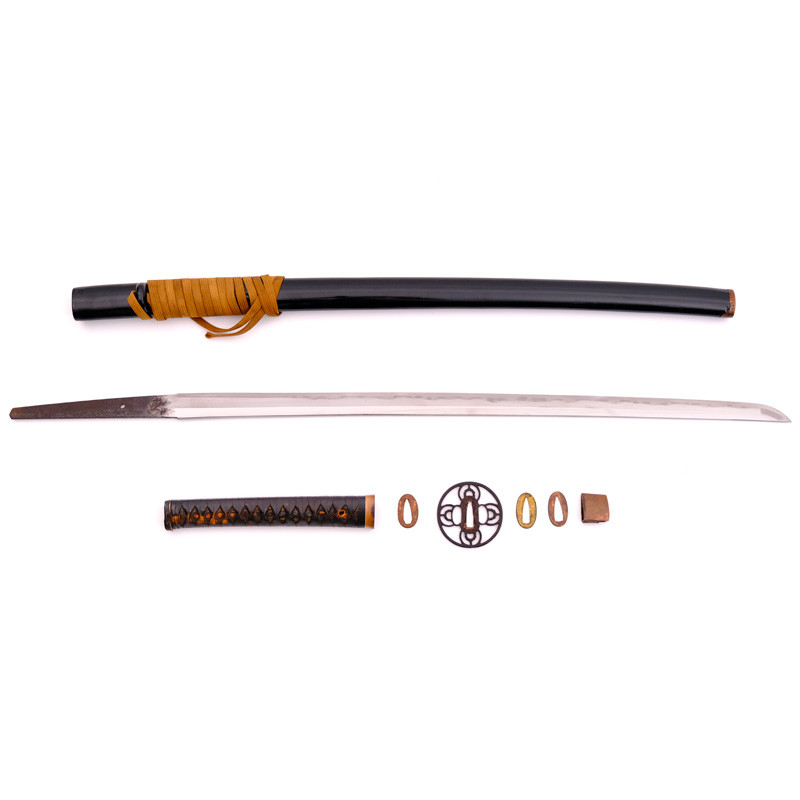


















More informations about this product
| Total Weight | 1.182 kg | |
| Weight without Saya | 0.869 kg | |
| Blade Weight | 0.667 kg | |
| Full Blade length (Toshin) | 89.60 cm | |
| Nagasa | 70.50 cm | |
| Nakago Length | 19.10 cm | |
| Sori (curvature) | 0.70 cm | |
| Kissaki Length | 3.63 cm | |
| Moto Haba | 3.14 cm | |
| Saki Haba | 2.00 cm | |
| Moto Kasane | A = 0.61 cm B = 0.65 cm |
|
| Saki Kasane | A = 0.41 cm B = 0.45 cm |
|
| Curvature | Tori Zori with Funbari | |
| Type Kissaki | Chu Kissaki | |
| Blade Structure | Shinogi Zukuri (diamond shaped) | |
| Mune | Iori Mune (triangular) | |
| Hamon | Start in Suguha, then Gunome Midare with the presence of Choji, Togari and Tobi Gaki. | |
| Hada | Itame | |
| Boshi | Ko maru | |
| Nakago | Ubu, 1 Mekugi Ana, O Sujikai Yasurime, Shape Ichimonji Gata, Korijiri end in Iriyama Gata | |
| Saya | Length 76 cm, Weight 0.312 kg. Presence of Kaeshi Zuno. Metallic reinforcement on the Kojiri. Sageo silk brown. | |
| Tsuka & Tosogu (Tsuba, Menuki, Fuchi Kashira) |
- Tsuka: length 23.5 cm, weight 91 g Black braided in patinated cotton, not Samegawa but dark silk brocard with golden notes - Tsuba : Akasaka School Iron, Maru Gata, Mimi Gata border, type Owari Sukashi. 7.41 cm x 7.49 cm x 0.49cm for a weight of 66 g. - Habaki: Neko Gaki oblique very light weight 26 g - Menuki: Large Dragon in Higo type Shakudo - Seppa: 3 Seppa for a total weight of 15 g - Fuchi:in Copper - Kashira: old black patinated |
|
| Study & Team Review |
Echizen Seki 越前関 is a school of Seki blacksmiths in the former province of Mino (Gifu) who settled in Echizen (Fukui) during the Keicho era (1596-1615). |
|
Share your opinion
error Your review appreciation cannot be sent
feedback Report comment
check_circle Report sent
error Your report cannot be sent